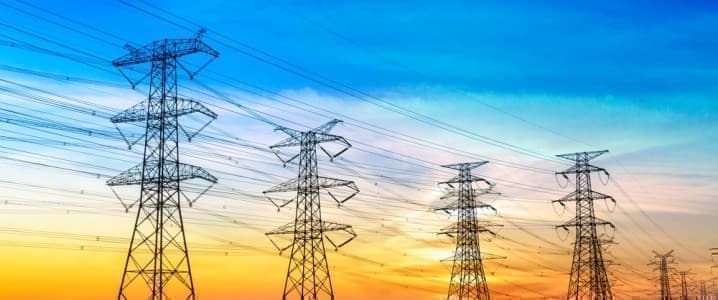After multiple energy crises across several states last year due to America’s aging infrastructure and failing grid system, Americans are once again being asked to curb their energy usage as they face another summer of sweltering temperatures and potential blackouts. Grand promises to improve infrastructure have amounted to little, with no obvious improvements across the most critical areas, as U.S. energy infrastructure remains inadequate as demand grows.
Last year, several Texans died after a strong winter storm took down the grid and water, with many relying on generators to provide vital heating for as long as a week. Oil production decreased by approximately 1.2 million bpd due to freezing pipelines and a lack of electricity to key infrastructure. Due to repeated delays in federal action, local players drew up their own strategies to tackle the crises. The Texas Railroad Commission approved new rules for critical designation of natural gas infrastructure during energy emergencies and the Public Utility Commission (PUC) of Texas published a report called Never Again, aimed at avoiding energy failures like that of the February 2021 storm. And yet little seems to have changed to date.
During the past two years, Californian wildfires and record high temperatures disrupted the state’s outdated grid system, leading to blackouts during soaring temperatures. Dating back to the 1960s and 1970s, California’s electricity network has failed to meet the rising demand in the face of more regular severe weather events. It seems that the state government is in the habit of waiting until the grid fails before it provides funding to fix it. Many of the wildfires that devastated California’s woodland were caused by electrical equipment and power line failures, demonstrating the dire situation.
Yet, there continues to be a huge gap between President Biden's and the Department of Energy's (DoE) funding promises and the action on the ground. As part of Biden’s $1 trillion Bipartisan Infrastructure Law, the “Building a Better Grid” Initiative aims to update the country’s grid system while modernizing it to support renewable energy developments. The initiative is expected to make the grid more resilient to the impact of climate change, improve renewable energy delivery, and create more jobs. However, little progress has been made due to several challenges, such as state-level pushback and a lack of coordination across different local governments and regulators.
And now, Texans are being asked once again to curb their electricity usage during the scorching summer months, as the state’s grid system has yet to be updated to deal with the rise in demand and increasingly common extreme weather events being seen year-on-year. Last week, the Electric Reliability Council of Texas (ERCOT), which is responsible for around 90 percent of Texan electricity, asked residents and businesses in the state to increase their thermostat temperatures by one degree or more to ease consumption. It also requested that Texans avoid using major appliances between 2 p.m. and 8 p.m. last Monday.
Temperatures in Texas reached 109 degrees last week, with 50 million Americans facing heat warnings across the country in response to a heatwave. Energy suppliers in several states are worried about delivering electricity to residents and avoiding blackouts after previous failures in the face of extreme weather. As heatwaves and very cold winters become more commonplace, the grid in many states is not built to withstand the demands placed on it.
ERCOT projected energy shortages, partly due to issues with renewable energy projects due to the lack of energy storage systems in place to counter fluctuations in availability. The group stated, “The heat wave that has settled on Texas and much of the central United States is driving increased electric use.” It added, “While solar power is generally reaching near full generation capacity, wind generation is currently generating significantly less than what it historically generated in this time period.”
And there have already been questions about whether California will face similar issues going into the summer months. State officials predict that extreme heat and other climate change events may threaten California’s electrical grid. Electricity provision may not be able to keep up with the rise in demand. Not only is the aging grid unable to meet the needs of the population but several renewable energy projects may be hindered by droughts and wildfires.
A recent analysis of existing power supplies, new sources expected to come online, and the potential for extreme events suggested that there may be blackouts during the summer months in California due to the gap between the supply and demand of electricity, particularly during peak hours. Experts now suggest that officials will need to account for regular crisis events when calculating the state’s electricity supply, allowing for a greater buffer than previously, potentially 22.5 percent above projected peak demand.
As Texas and California face another summer of energy uncertainties and potential blackouts, it demonstrates the dire state of U.S. energy infrastructure. Without rapid and heavy investment, several states are expected to face similar problems as weather conditions worsen each year.
By Felicity Bradstock for Oilprice.com
More Top Reads From Oilprice.com:
- Boris Johnson Resigns As Energy Crisis Worsens And Scandals Mount
- The EU Has Frozen $13 Billion In Russian Assets
- Solar Stocks Soar As China Considers $220 Billion Stimulus Package

















